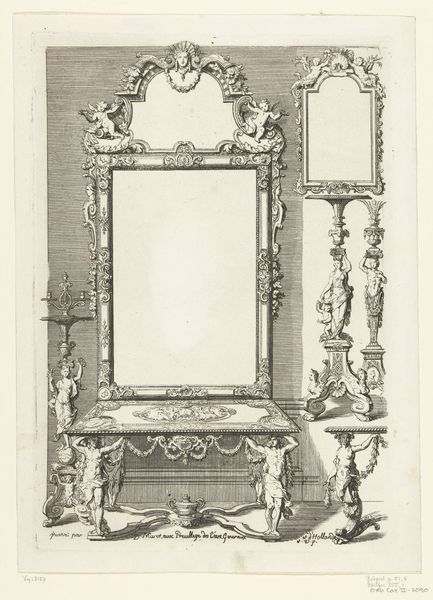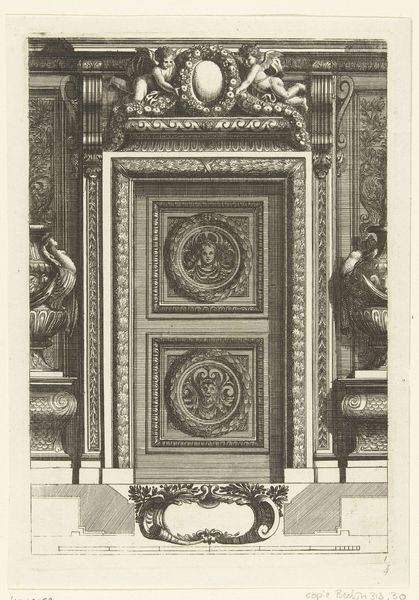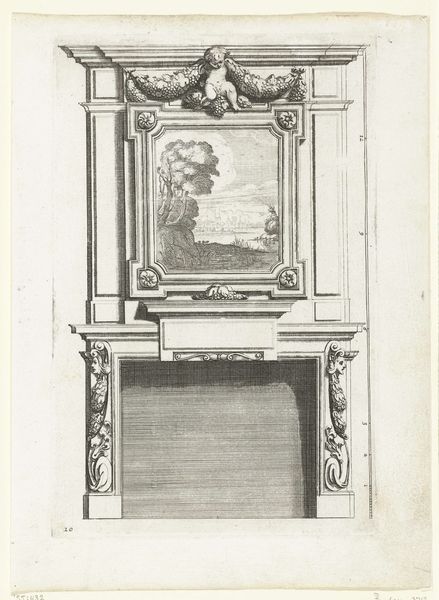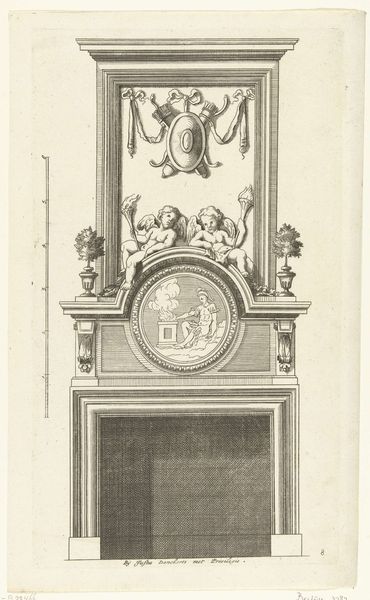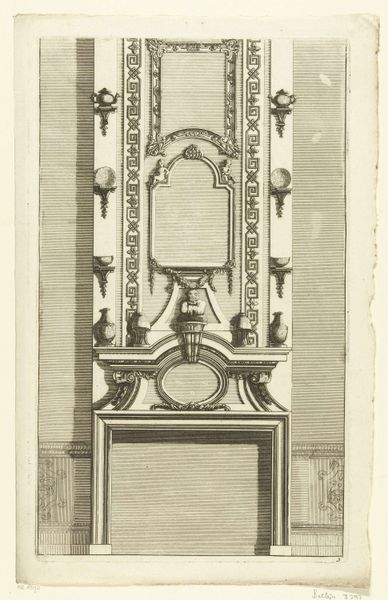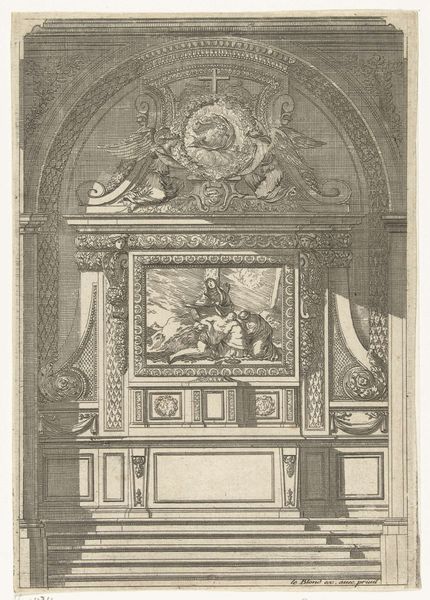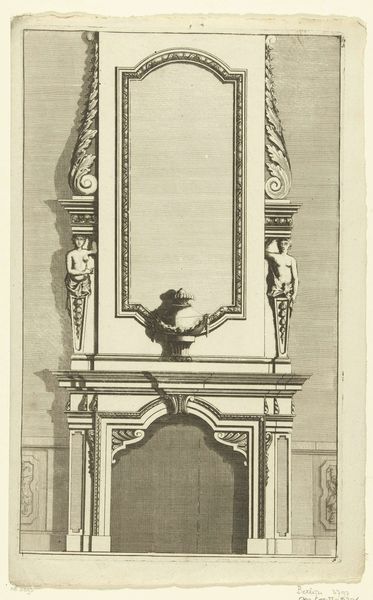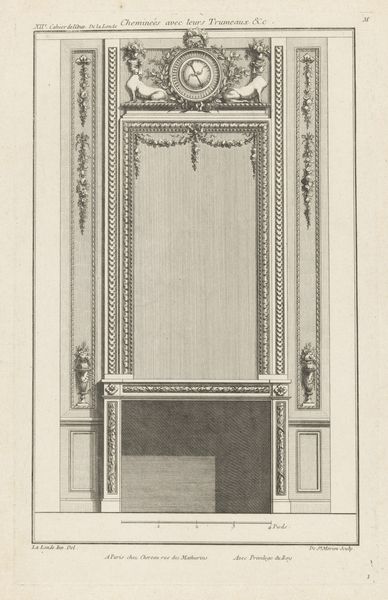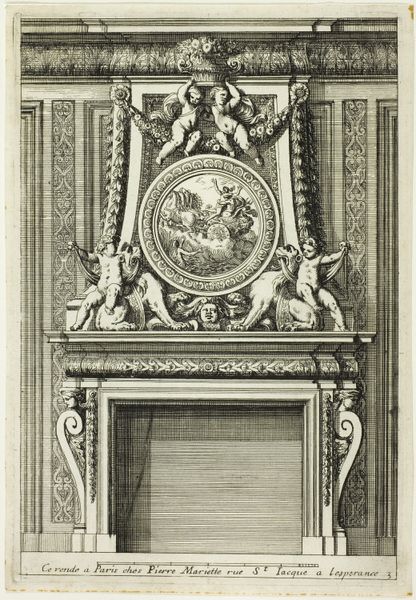
drawing, print, engraving
#
drawing
#
baroque
# print
#
form
#
line
#
engraving
Dimensions: height 311 mm, width 207 mm
Copyright: Rijks Museum: Open Domain
Gaspar Bouttats created this print called 'Omlijsting' in the Netherlands sometime between 1663 and 1695 using etching. The artwork shows an ornate frame, flanked by classical columns and festooned with garlands. This was a period when the Dutch Republic was a major economic power, and the art market flourished. Prints like this one served as templates for craftsmen, providing inspiration for furniture, architectural details, and interior decoration. The emphasis on classical motifs reflects the cultural values of the time, which admired the achievements of ancient Greece and Rome. The frame itself suggests the institutional power of art. The blank space within invites us to consider what images or ideas were considered worthy of such elaborate presentation. Was this conservatism or progressiveness? Historians delve into period pattern books, architectural treatises, and social histories to understand the context in which such images were created and consumed. What does it mean to frame nothing at all? Studying these sources helps us understand the social conditions that shaped artistic production and the ways in which art reflected and reinforced existing social norms.
Comments
No comments
Be the first to comment and join the conversation on the ultimate creative platform.
